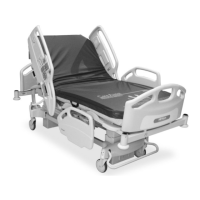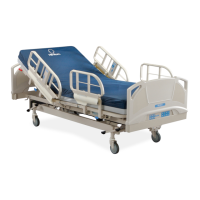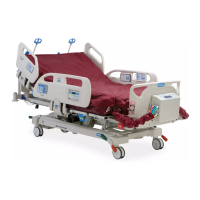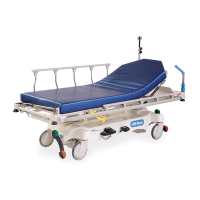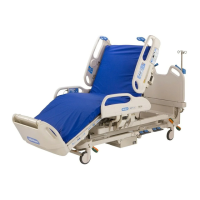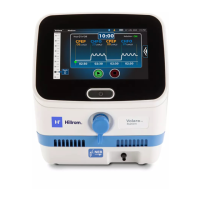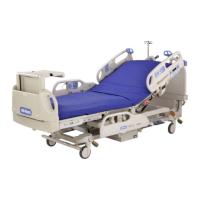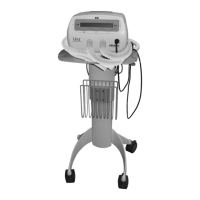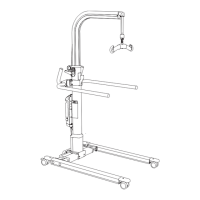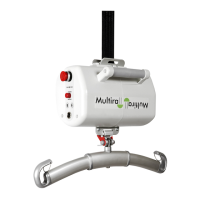Electrical System (B Model and Newer Beds)
Chapter 3: Theory of Operation
CareAssist® and CareAssist® ES Bed Service Manual (MAN330 REV 4) Page 3 - 13
3
Power Stage
The power stage is composed of an AC input transformer, protected at the
input by two anti-surge fuses and an internal self-resetting thermal cutout.
There are two transformer options: one having a single winding primary,
120 V, 60 Hz for use in North America, and the other having two primaries,
multi-tapped, for use in 100, 110, 115, 127, 220, 230, and 240 V, 50/60 Hz and
120 V, 50 Hz applications.
There are two secondaries, both of which are protected by Positive
Temperature Coefficient (PTC) devices. The PTCs are located on the siderail
interface P.C. board. The first secondary, nominally 24.5 V AC, supplies power
to the motor control P.C. board. It is rectified and filtered by the motor control
P.C. board to produce a voltage of approximately 33 V DC to supply power to
the drive motors. The other secondary, nominally 14.5 V AC, is rectified,
filtered, and regulated to produce a voltage of 8.5 V DC to supply power to the
Scale System, Bed Exit System, and the SideCom® Communication System.
Function Control
The motors are controlled by relays and/or FET transistors. In order to protect
these relays from electrical arcing during switching, the FET transistor
operates such that when a function is activated, the relay closes with no
current. In the same way, when a function control is released, the FET cuts the
power before the relay opens.
Overload limiting is provided by controlling the current at the output of each
motor. In the event of overload or mechanical blockage, the supply of the
relevant motor is cut off by a control transistor without affecting the operation
of the other motors, except for specific situations. In this case, the overload is
indicated by an audible alarm. This overload indication also enables failure of
a motor end of travel to be detected, except for the hilow columns, which have
a backup end of travel.
Battery Circuit
The bed is equipped with battery backup. This battery backup is internal to the
power supply unit. The charging circuit, has current limiting according to the
level of the battery charge. Charging begins as soon as the unit is connected to
AC power. At the end of charging, the load current is very low.
When the power supply is disconnected from the AC power, the battery backup
is activated by pressing the Battery control on the caregiver controls.
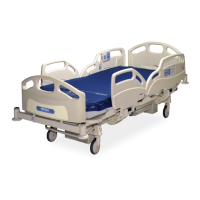
